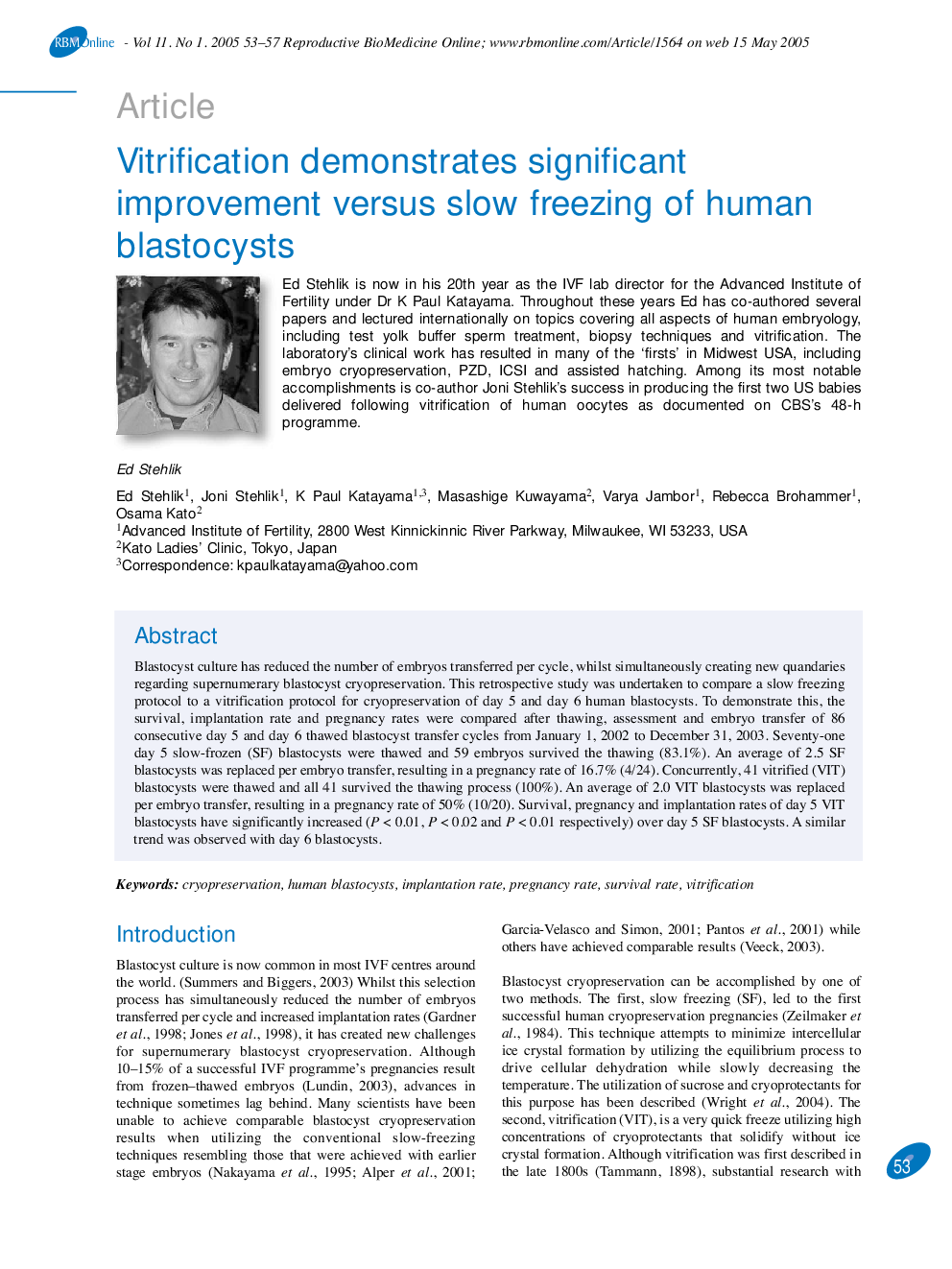| Article ID | Journal | Published Year | Pages | File Type |
|---|---|---|---|---|
| 9335291 | Reproductive BioMedicine Online | 2005 | 5 Pages |
Abstract
Blastocyst culture has reduced the number of embryos transferred per cycle, whilst simultaneously creating new quandaries regarding supernumerary blastocyst cryopreservation. This retrospective study was undertaken to compare a slow freezing protocol to a vitrification protocol for cryopreservation of day 5 and day 6 human blastocysts. To demonstrate this, the survival, implantation rate and pregnancy rates were compared after thawing, assessment and embryo transfer of 86 consecutive day 5 and day 6 thawed blastocyst transfer cycles from January 1, 2002 to December 31, 2003. Seventy-one day 5 slow-frozen (SF) blastocysts were thawed and 59 embryos survived the thawing (83.1%). An average of 2.5 SF blastocysts was replaced per embryo transfer, resulting in a pregnancy rate of 16.7% (4/24). Concurrently, 41 vitrified (VIT) blastocysts were thawed and all 41 survived the thawing process (100%). An average of 2.0 VIT blastocysts was replaced per embryo transfer, resulting in a pregnancy rate of 50% (10/20). Survival, pregnancy and implantation rates of day 5 VIT blastocysts have significantly increased (P < 0.01, P < 0.02 and P < 0.01 respectively) over day 5 SF blastocysts. A similar trend was observed with day 6 blastocysts.
Related Topics
Health Sciences
Medicine and Dentistry
Obstetrics, Gynecology and Women's Health
Authors
Ed Stehlik, Joni Stehlik, K Paul Katayama, Masashige Kuwayama, Varya Jambor, Rebecca Brohammer, Osama Kato,
